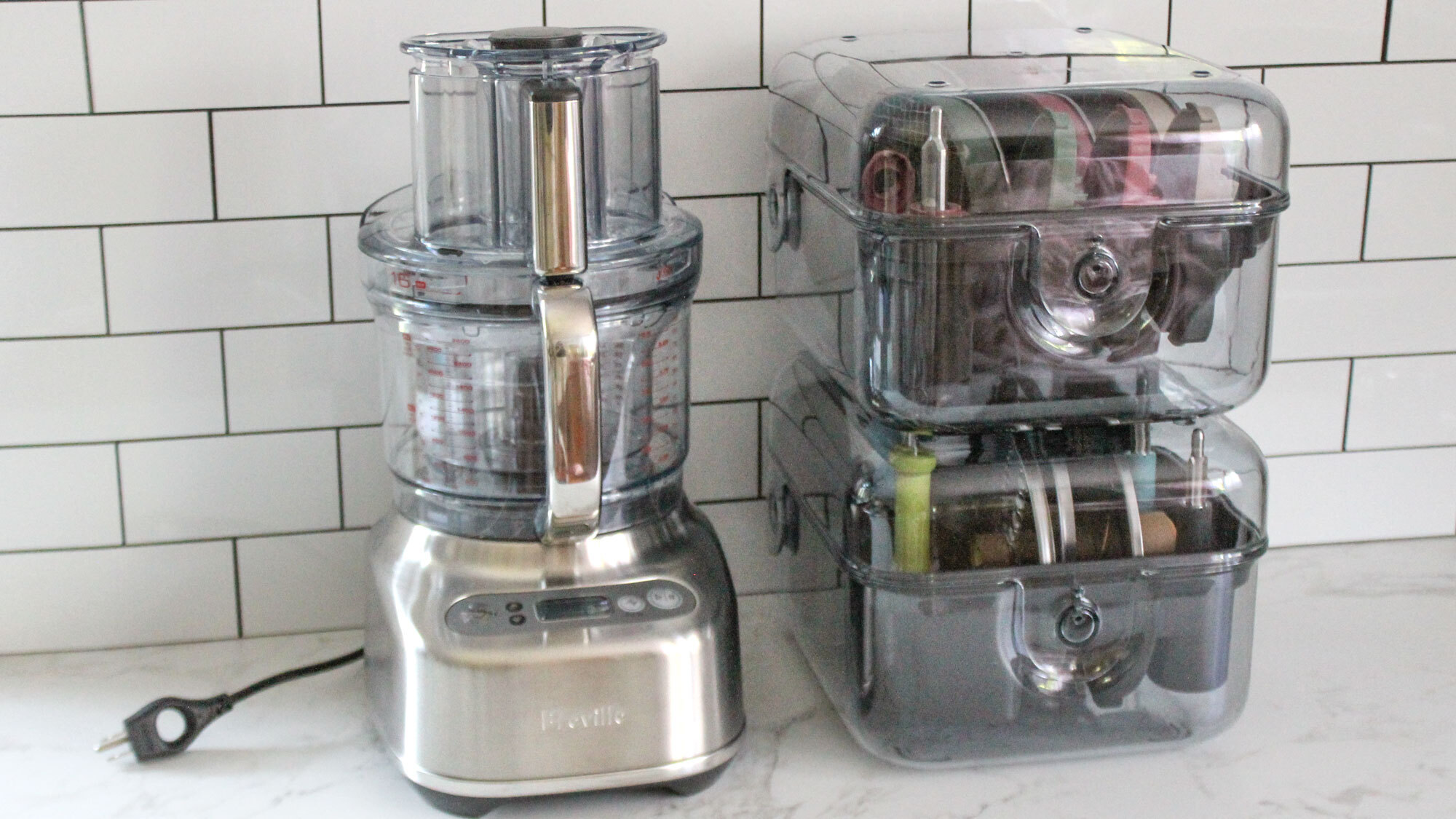
Food Processor Dimensions: 17.7 x 11.3 x 9.2 inches
Storage Box Dimensions: 8.3 x 12.6 x 10.9 inches
Weight: 40.5 pounds
Power: 1,450 watts
Capacity: 16 cups; 2.5 cups in mini bowl
Settings: Start, Stop, Pulse, Timer
Warranty: 2-year limited product warranty, plus 30-year limited motor warranty
Food processors are often underappreciated kitchen appliances, as many people don’t realize just how much you can do with them. The best food processors can be used for basics like chopping veggies and making purees, but many also come with special attachments that let you quickly slice or shred ingredients, too.
However, the Breville Paradice 16 takes that versatility a step further, allowing you to streamline your cooking even more. This high-end food processor comes with the most comprehensive selection of accessories that I’ve ever seen, including tools for dicing, slicing French fries, kneading dough, and much more. It has an extra-large bowl capacity of 16 cups, but it also comes with a small 2.5-cup bowl insert and mini blade for smaller recipes.
To see if this versatile food process is worth the splurge, I tested out the Paradice 16 in my kitchen, using it to make everything from hummus to chopped salad. Here’s what I thought about this heavy-duty appliance and who I think should buy it.
Breville Paradice 16: Price and availability
The Breville Paradice 16 is available in the US for $699.95. You can purchase it through the Breville website or from retailers like Williams Sonoma or Sur La Table.
In the UK, Breville is known as Sage, and you can buy the Sage Paradice 16 for £579.95 at the Sage website.
Breville Paradice 16: Design
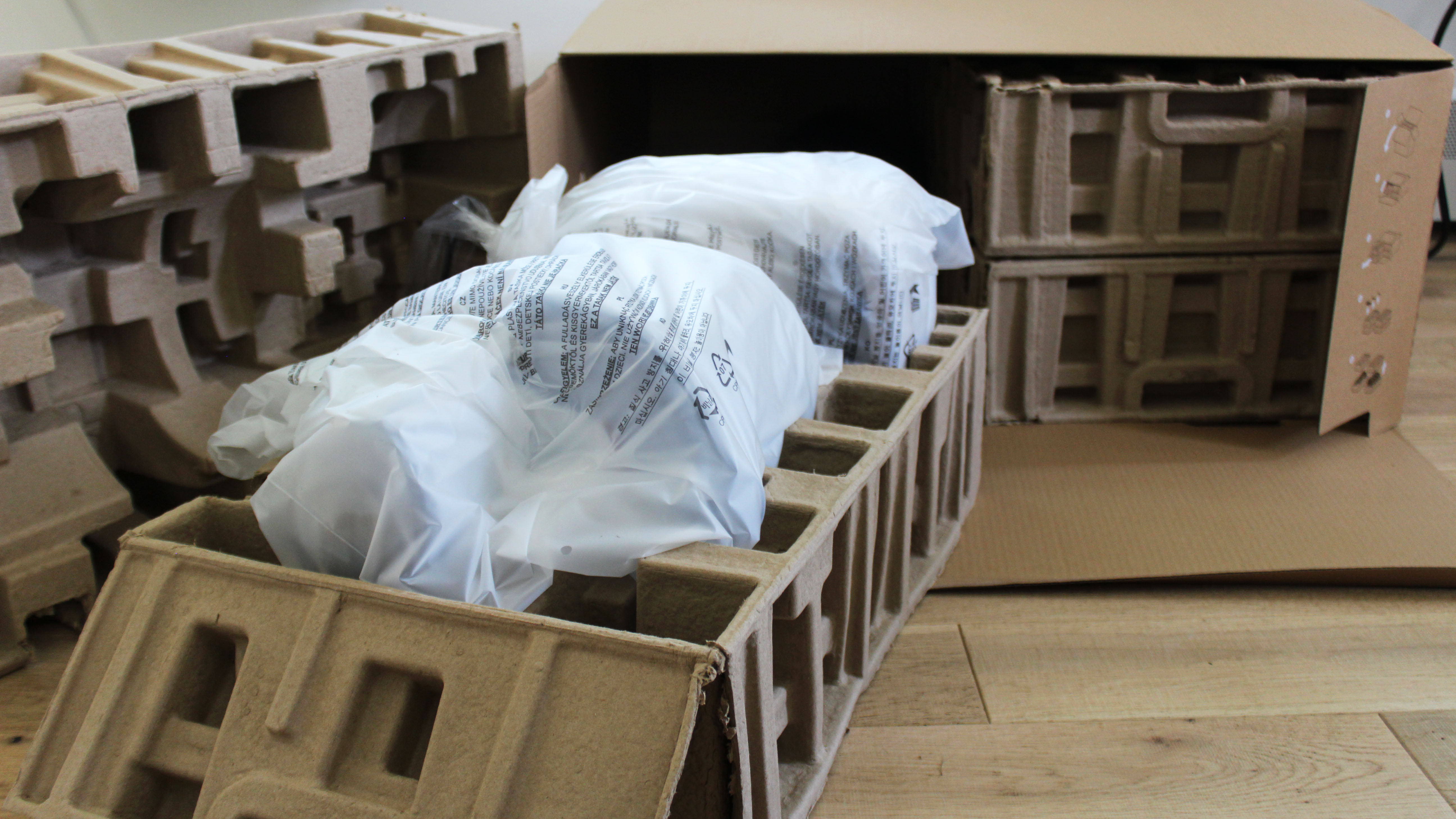
When the Breville Paradice 16 arrived on my doorstep, I was shocked at both the size and weight of the package. It was triple the size I expected for a food processor and weighed around 60 pounds. I actually needed help bringing the box inside because it was so large and unwieldy—something to keep in mind if you need to carry it up stairs to get it into your home.
When I unboxed the product, I quickly realized why the box was so big. In addition to the food processor itself, the package contains two storage boxes full of accessories, each of which measures around 8.3 x 12.6 x 10.9 inches. One box contains all the blades for the food processor, including the s-blade, dough blade, mini blade, as well as the main and mini spindles. This box also stores the adjustable slider, reversible shredder and French fry discs. The second box houses the Paradice kit, which includes three dicing discs, a dicing distributor, and a dicing gearbox.
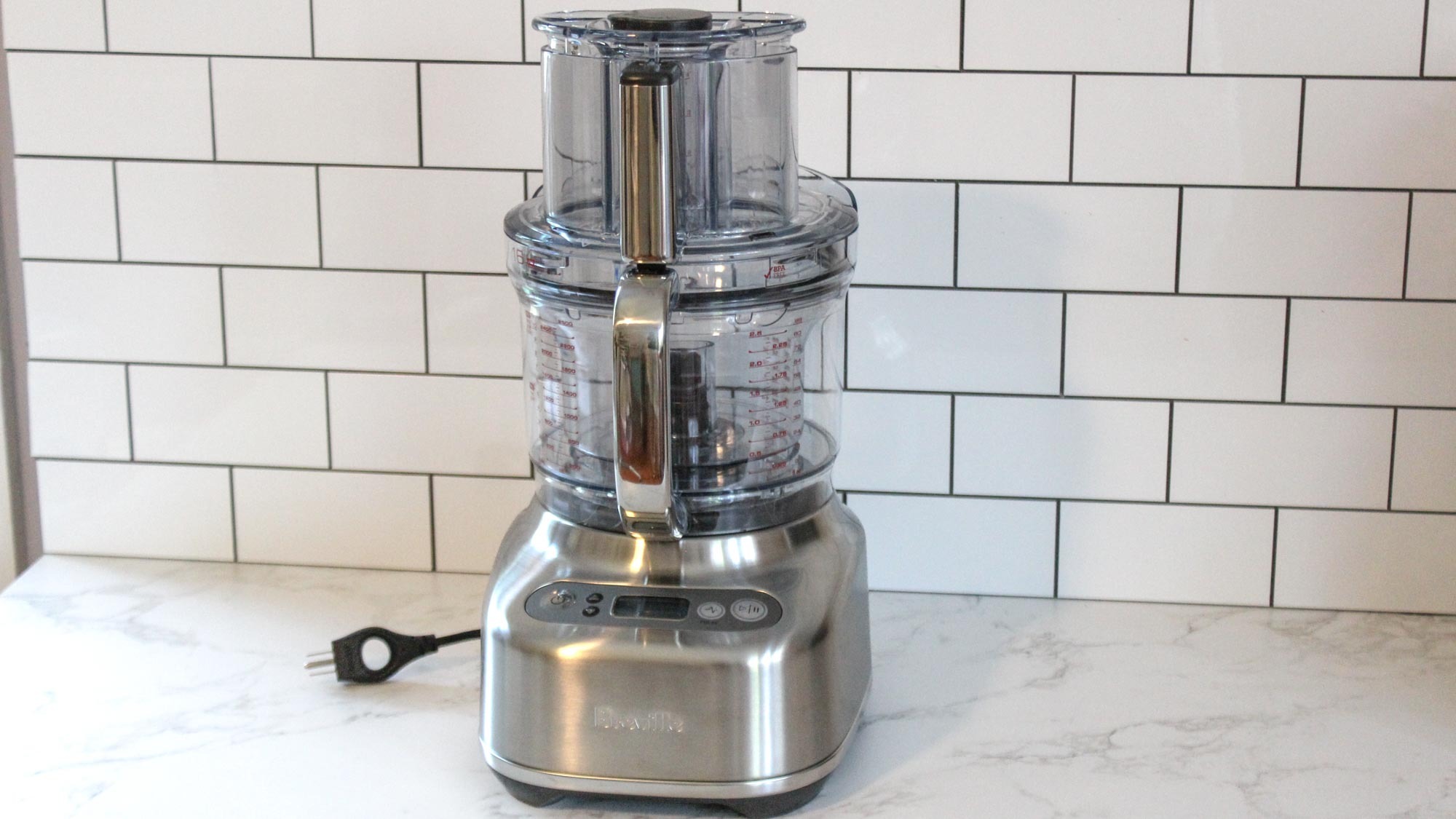
The boxes have clear lids so you can see what’s inside, and there are also little cards stashed in the back of the box that show the purpose of each attachment. The pieces are also conveniently color-coded to help you select the right spindle for each tool. The storage boxes do stack on top of each other, but they still take up a lot of storage space, so this isn’t a product for anyone with a small kitchen.
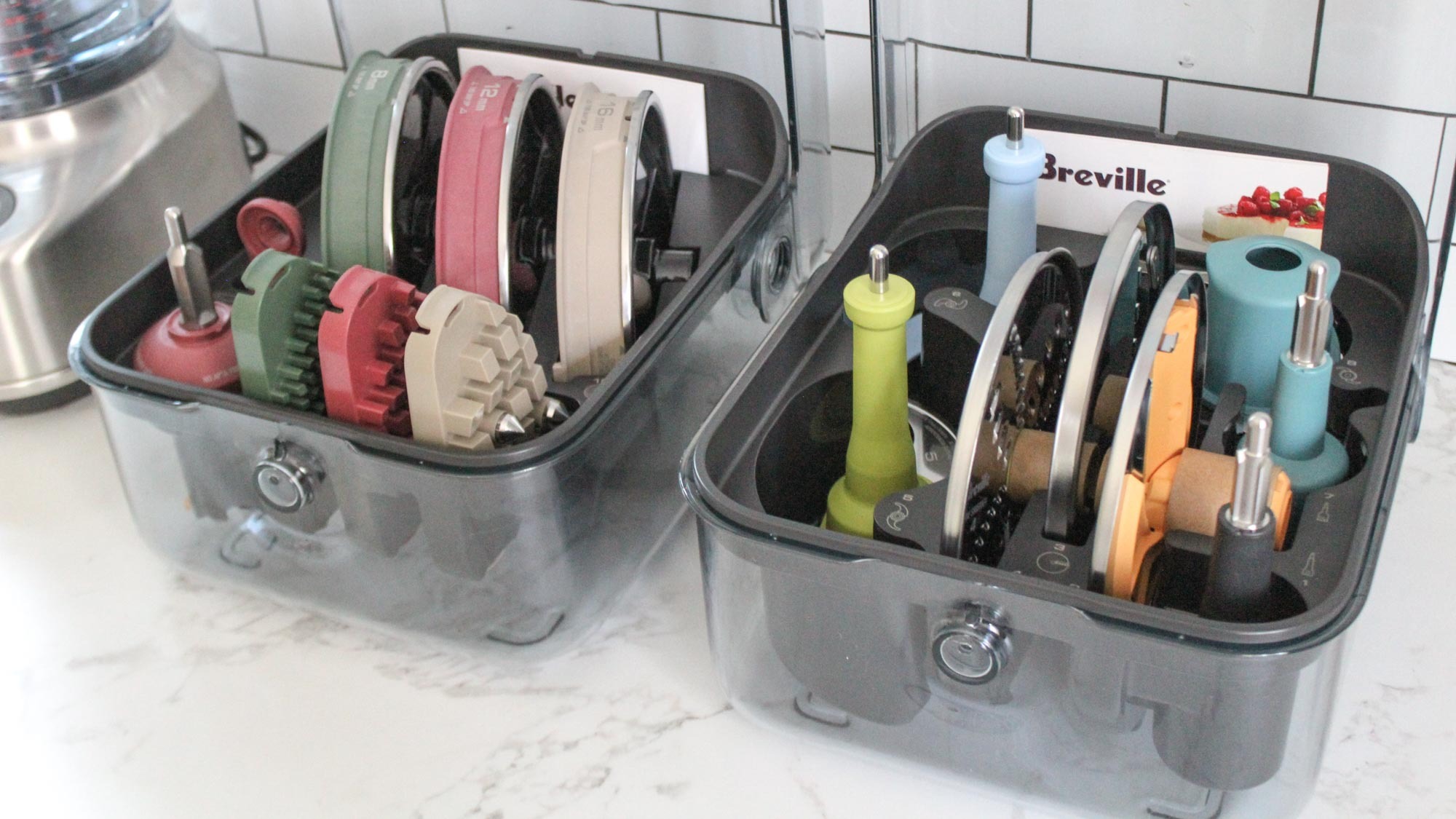
The food processor itself is also quite large and heavy, making it quite substantial to move around. The work bowl has a capacity of 16 cups, but it also comes with a mini bowl that holds 2.5 cups and can be inserted into the larger bowl when you’re working with smaller quantities. The work bowl is made from BPA-free plastic and has measurement markings on one side, and the chute is 5.5 inches wide. There are three pusher sizes to accommodate all types of ingredients—from whole potatoes to slim carrots—and the smallest pusher actually doubles as a liquid measuring cup when you remove its lid.
The control panel on this food processor is fairly simple. It has a power button, a start/pause button, and a pulse button, as well as up and down arrows that let you adjust its digital timer. When you turn on the blade, the screen automatically starts a count-up timer, letting you know how long you’ve been processing the ingredients, but you can also change it to a count-down timer, if you prefer.
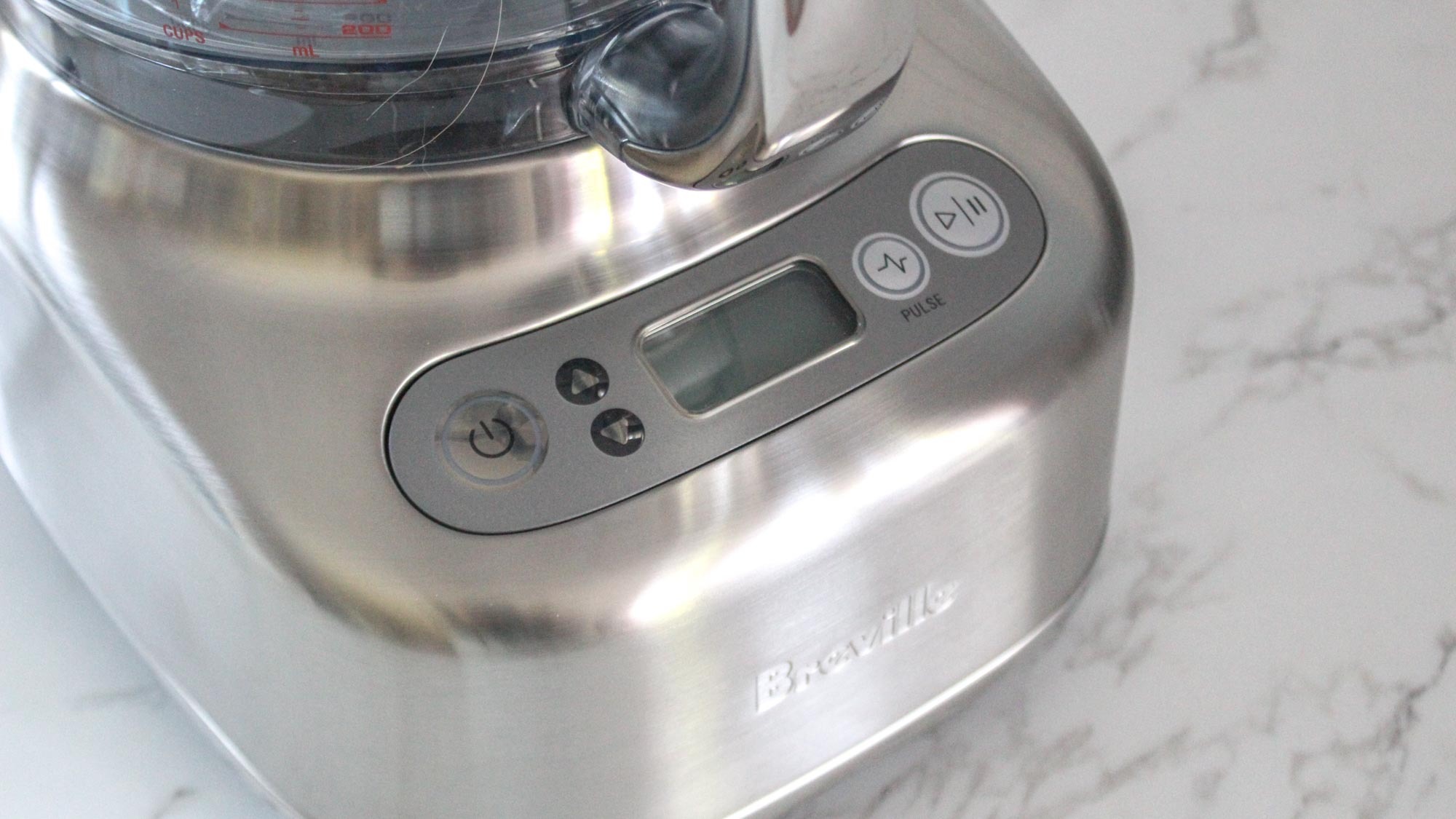
Breville Paradice 16: Performance
Making lemon bars
I made several different recipes with the Paradice 16 to test its different abilities. I started with one of my favorite dessert recipes—lemon bars—which uses a food processor to mix up the buttery crust quickly. I tossed the flour, almonds, lemon zest and cold butter into the work bowl, then pulsed it several times to combine. I was quite surprised at how easily the food processor was able to chop up the cold butter. Thanks to the appliance’s powerful motor, I only had to pulse the mixture a few times before the ingredients were uniformly mixed, and it made the task look like light work!

Making hummus
The next recipe I tried was a classic hummus recipe—something that’s generally made in a food processor. It was a fairly small batch, so I used the small work bowl insert and mini blade. I love that all the pieces are color-coded, which makes it quick and easy to find the ones you need.
With the garlic, chickpeas, and seasonings in the bowl, I turned on the food processor and slowly added in the olive oil. The ingredients quickly turned into a uniform puree, and I added in a small amount of aquafaba while the processor was running to make it extra smooth. The final result was absolutely amazing—it was some of the best hummus I’ve ever had, and there wasn’t a single chunk to be found.
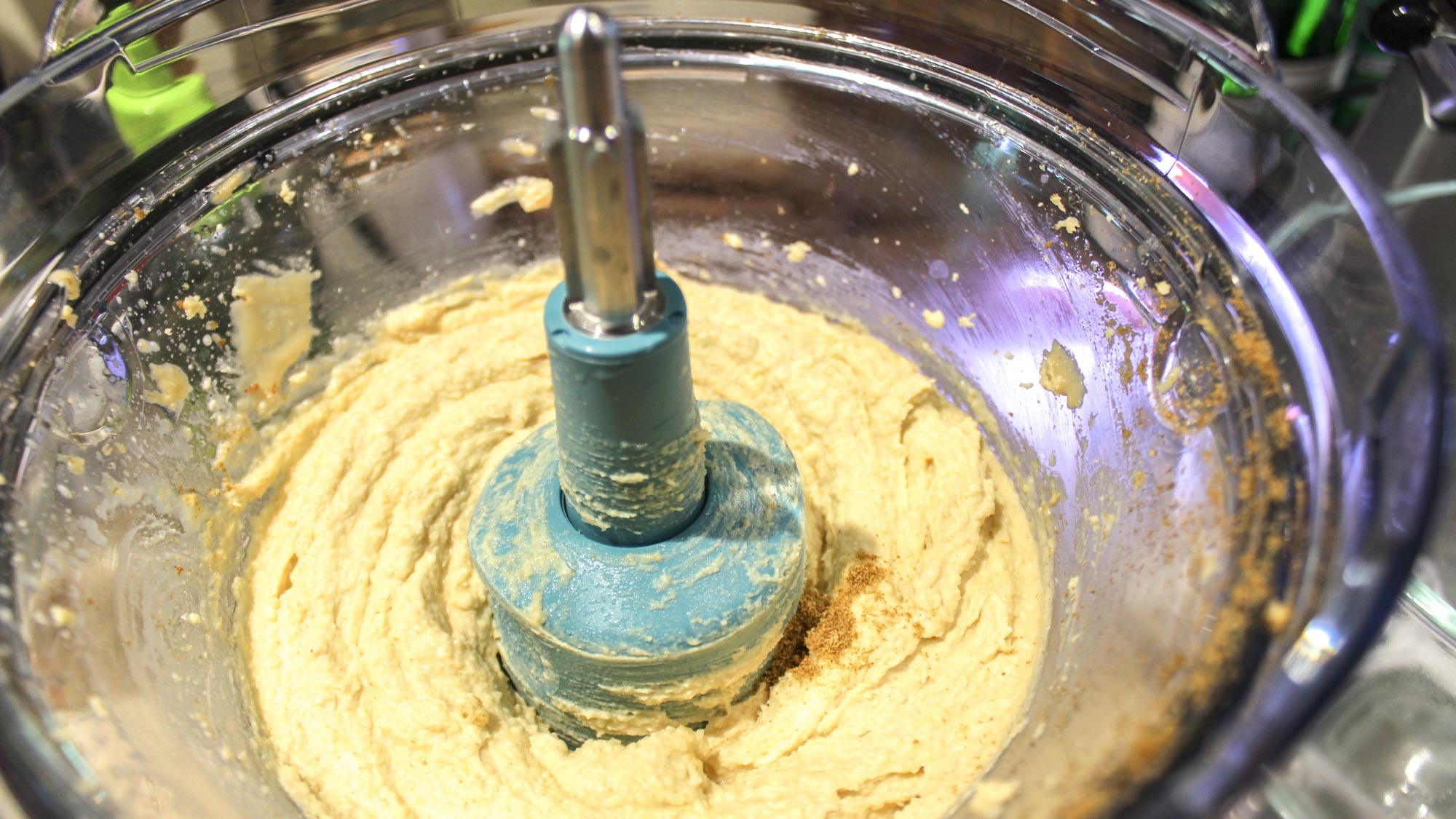
Dicing vegetables
Of course, I wanted to test out the unit’s dicing kit, so I found a recipe for Chop Chop Salad on the Breville website. It contains lots of chopped vegetables, all of which you’re able to dice up right in the food processor. I started by cutting up the lettuce with the adjustable slicing blade—I cut each head of romaine in half and fed it straight into the chute. It did a good job creating perfect bite-sized pieces, but the ends of the lettuce tended to end up in larger chunks that I ended up pulling out.
The next task was dicing the cucumbers and tomatoes. The recipe recommended using the red 12mm dicing grid and disk, and it did take me a few minutes to figure out how to set up the pieces in the bowl. The setup includes a spinning disc that cuts off slices of the ingredient, which are then pushed through the dicing grid and distributed into the bowl with the dicing distributor underneath. It’s a cool concept, and it worked pretty well on both ingredients. However, I did find that the last few slices don’t get pushed through the grid, so you have to manually push them through using the matching “cleaning cap,” which attaches to the bottom of the biggest pusher. It’s not a big deal, but it does take away from the overall convenience of the attachment.
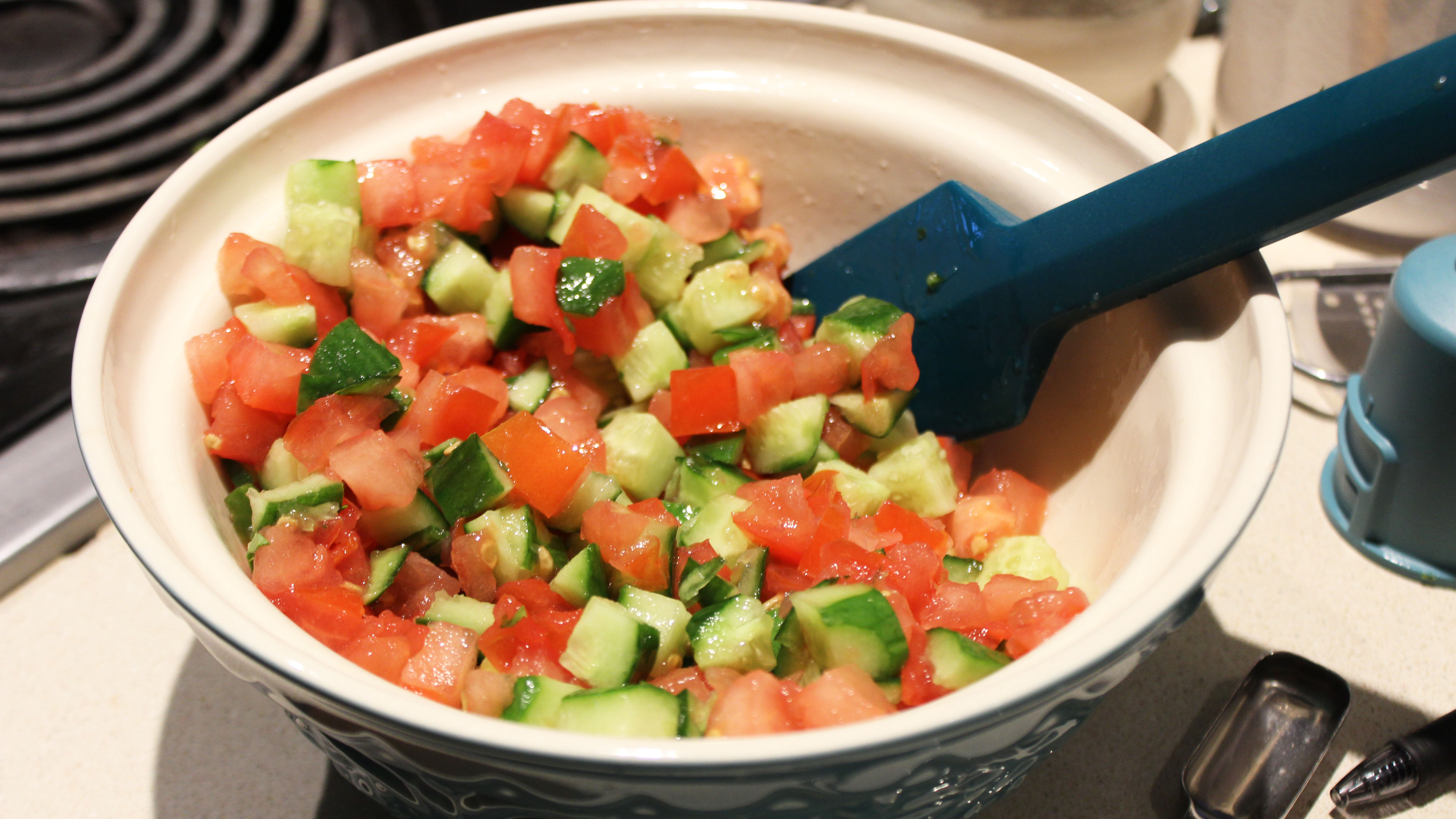
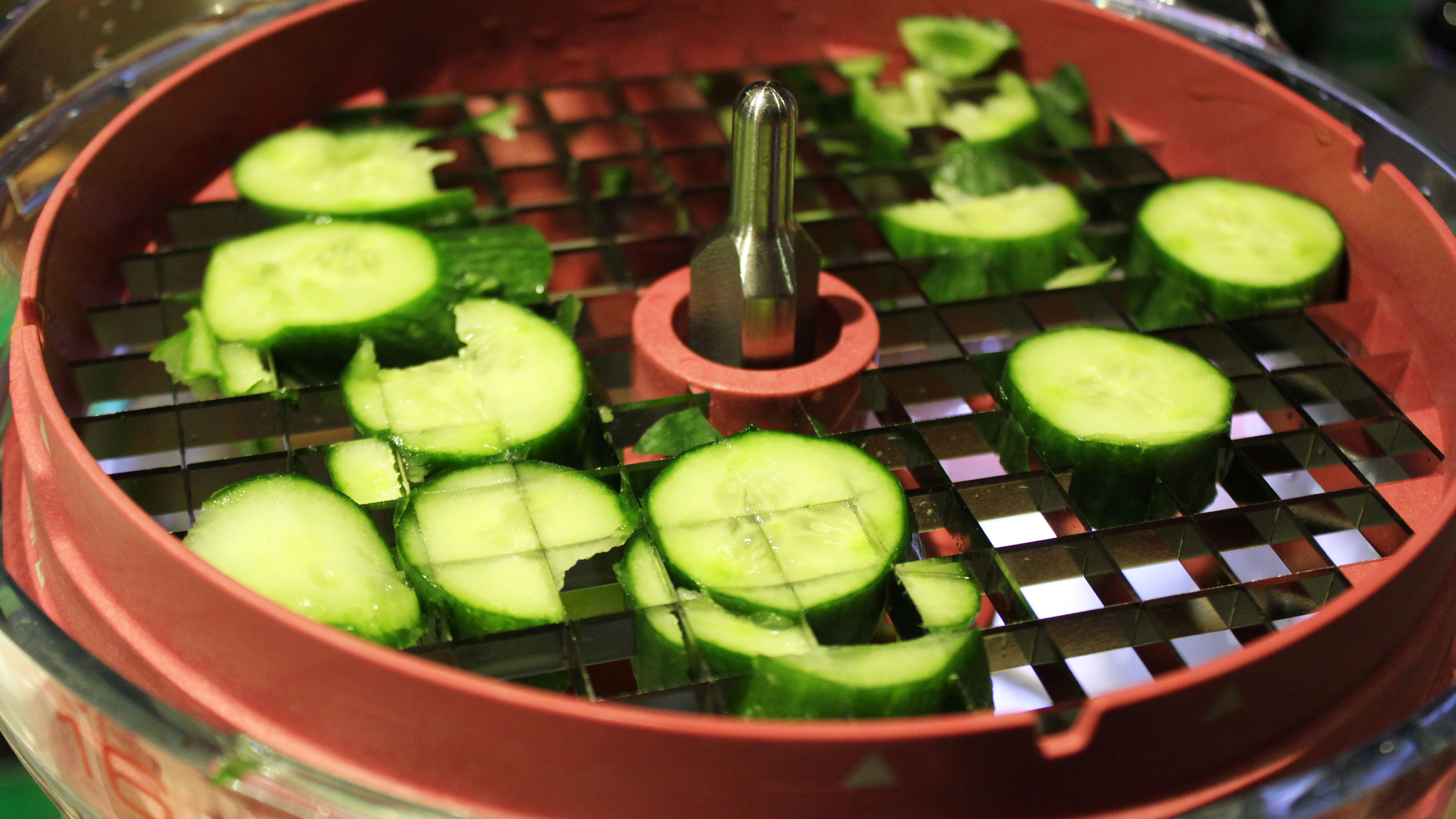
Making French fries
Finally, I wanted to test out the food processor’s French fry disc, which looks similar to the slicing disc but has vertical blades, as well. After setting it up, I simply put full-size russet potatoes down the food processor’s chute and used the pulse button to chop up each one. The disc worked really well, creating uniform potato slices in a matter of seconds. I was able to slice up three potatoes in around a minute—much faster than hand-chopping, and much safer than using a mandoline. Some of the larger fries were a bit curved due to the rotation of the blade, but they still tasted great when air fried.
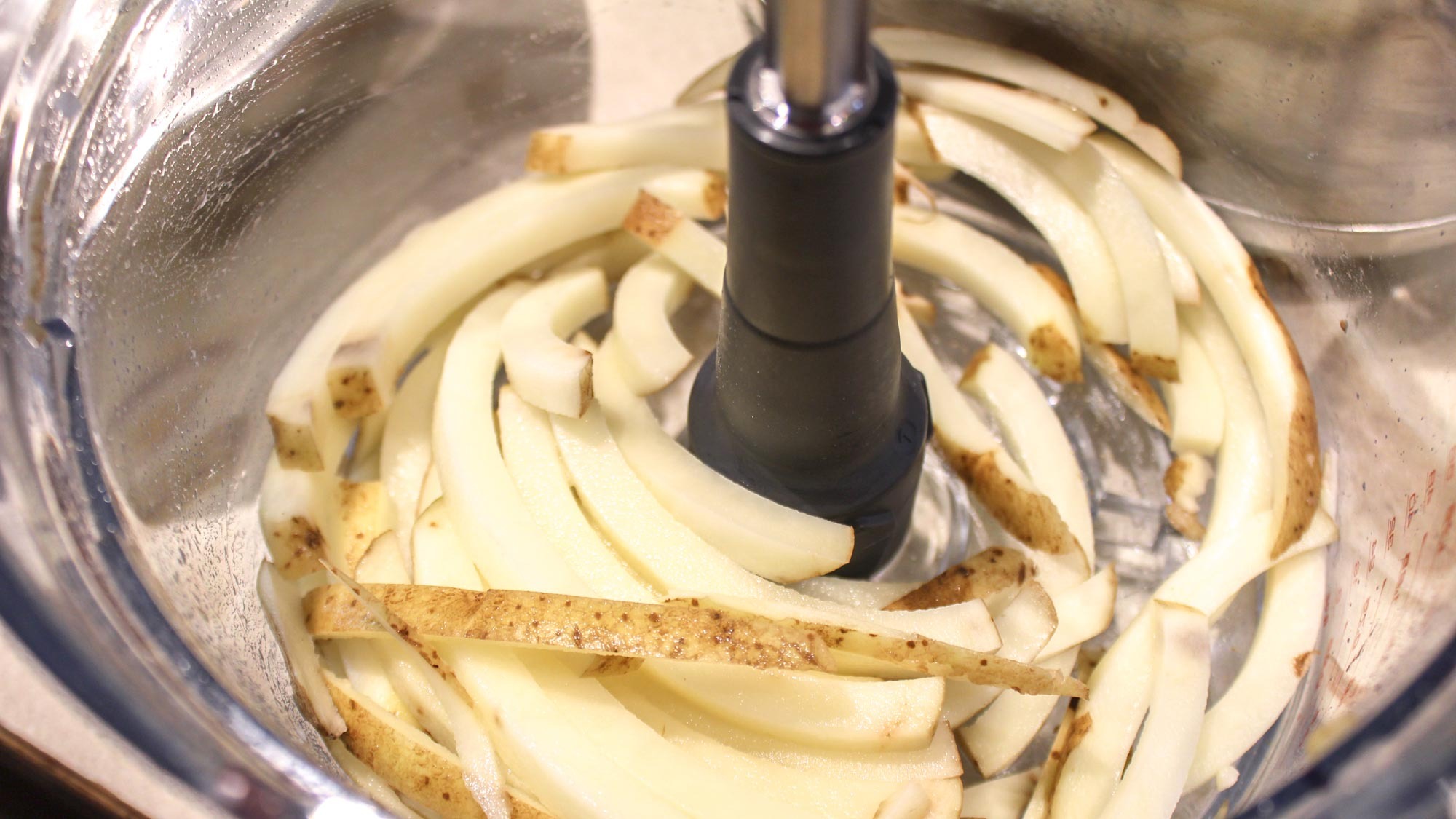
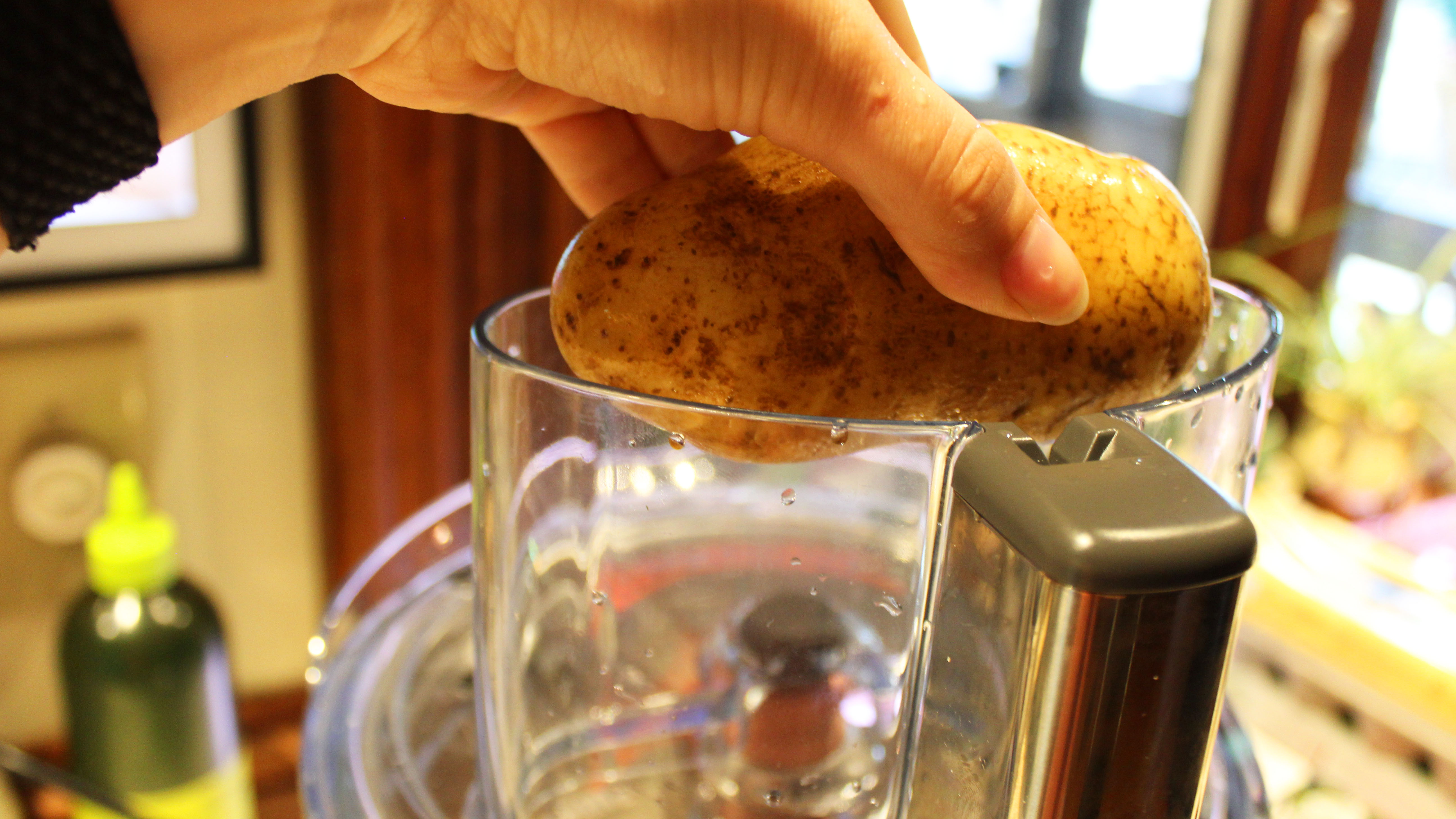
Cleaning
Whenever I’m testing an appliance with sharp blades, I pay close attention to how it’s supposed to be cleaned. After all, if you have to hand-wash something like the dicing grids, there’s a high risk of cutting yourself. The good news, however, is that the majority of this food processor's components are dishwasher-friendly.
The blades, disc attachments, spindles, food pushers, and dicing components are all safe to put on the top rack of the dishwasher, which makes them easy to clean after use. The work bowl and lid are also technically dishwasher safe, but the brand recommends hand-washing whenever possible to minimize the chance of damaging the plastic. I found that if you rinse it out right after use to get rid of any food residue, it’s easy to hand-wash these pieces and store them back on the base of the appliance.
How does the Breville Paradice 16 compare?
In terms of versatility (and price), the Breville Paradice 16 is in a league of its own. It has an extra-large 16-cup capacity, powerful 1,450-watt motor, and an unmatched set of accessories, but it’s also one of the most expensive food processors out there today, retailing for $699.95.
If you want the same versatility in a smaller, more affordable package, the brand recently released the Paradice 9, which is a better option for those with limited space. It doesn’t include quite as many accessories, but you still get a dicing kit, S-blade, reversible shredder, adjustable slicer, and dough blade, all of which can be stored inside the work bowl. This smaller version has a 9-cup capacity, and it’s more affordable at $399.95.
Alternatively, if you want the larger capacity but don’t need the dicing kit, the Breville Sous Chef 16 has a virtually identical design to the Paradice, complete with a 1,450-watt motor and 16-cup work bowl. The main difference is that the accessories package is smaller, but it is notably less expensive at $499.95.
Should you buy the Breville Paradice 16 Food Processor?
If you’re looking for a powerful food processor that can do it all, the Breville Paradice 16 is worth the splurge. This appliance is unmatched in terms of versatility thanks to its comprehensive accessories package, which includes attachments for dicing, cutting French fries, and so much more. Plus, its powerful motor makes quick work of even the toughest ingredients, and its 16-cup capacity is ideal for cooking in bulk.
That said, this food processor isn’t well-suited for anyone with a small kitchen. The appliance itself is large and heavy, and its two accessory storage boxes take up a lot of space.







